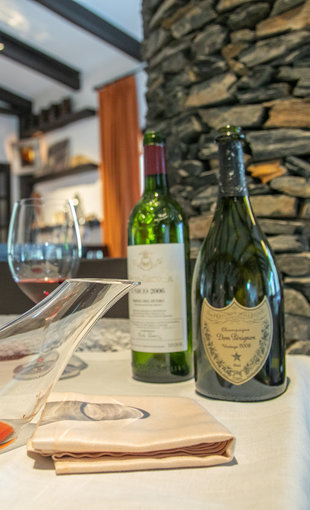The journey of El Bulli
El Bulli 1846 offers visitors the opportunity to reflect on the role of cuisine and, at the same time, to remember the role that the Roses restaurant played in culinary innovation
What is El Bulli 1846? The website and the informative material that can be found on the site’s opening pages explain it very clearly: it is “a museum to reflect on the knowledge, innovation and history of El Bulli”. El Bulli 1846 is the first restaurant to be converted into a museum. And, above all, it is a journey back to that time and space in which Ferran Adrià’s team and a restaurant located in Cala Montjoi, Roses, in Alt Empordà, managed to turn cuisine into an artistic creation.
It’s been 12 years since the restaurant closed its doors and since then a lot of hours, effort and sacrifices have been invested in creating a space aimed at preserving its legacy. Not to mention a lot of economic resources. In all, 11 million euros, four of which “have been donated by us through the Foundation, with the latest meals we organised and with the auction of the restaurant’s wine cellar in New York and Hong Kong”, as Adrià himself has explained in detail. The rest came from the sponsorship of companies such as Telefónica, CaixaBank, Lavazza and Grifols.
A unique visit
A visit to El Bulli 1846 will leave no visitor untouched. The setting is bucolic, with Cala Montjoi and the sea as a backdrop. Based on 69 artistic, audiovisual and conceptual installations, the new museum explains how the paradigm of world gastronomy changed. At the entrance to the historic building, a legend makes it very clear: “Copying is not creating”. It is a phrase that we find printed in the notebooks in the shop at the entrance and that gives meaning to the entire museum. A visit allows the restaurant’s former diners to recall their experiences, while those who were never lucky enough to be able to experience the dining experience first had can imagine it and go some way to understanding why it became the epicentre that revolutionised world cuisine.
The journey begins outside, with an interpretive labyrinth built from various installations that bring us closer to the role of cooking and innovation; all this, by the hand of Ferran Adrià. Here visitors will find the Sapiens Methodology, which takes the form of the first encyclopaedia of gastronomic restoration in the West: the Bullipedia.
The old restaurant, the next stage on the tour, is one of the highlights of the trip. Visitors will find the tables set as if going back to July 30, 2011, the last day the chef entered the dining room, and there is also information about the history of the restaurant. From a small terrace and barbecue, Jean-Louis Neichel and, above all, Juli Soler, began to build the foundations of what would be the future Bulli. At that time, Ferran Adrià was doing military service in Cartagena. There, he worked in the kitchen of the captain general and befriended another recruit, Fermí Puig, who recommended that he go to El Bulli. It was then that Juli Soler proposed that he manage the kitchen. The rest is history, told through photographs and other documents. The trip, at this point, becomes melancholy, especially for those who were lucky enough to visit when it was operating as a restaurant. For other mortals, the different rooms are a reminder of the story of that dream.
The route also invites us to remember the tools and techniques that made El Bulli a landmark; the atmosphere of the kitchen is even reproduced, as if visitors were entering a sculptor’s workshop. Here we learn how Ferran Adrià, Juli Soler and their team came to conceive the 28 iconic dishes and the 1846 creations that came out of that culinary workshop. The number is not random. 1846 is the year of birth of Auguste Escoffier, the French writer who introduced the methods of French cuisine and promoted modern cooking. Ferran Adrià wanted to match the number of recipes with that anniversary and has taken the number to give a name to the El Bulli legacy. On the upper floor, visitors will find a lot of material, which is often difficult to digest: diagrams, notebooks and maps to create each dish, interaction with other artistic disciplines and also Ferran Adrià’s key trip to Japan. The tour ends at the top of the building, right next to the original entrance. Here we find a room with a special dome, created by the RCR architecture studio and the DNA of El Bulli, showing us all the projects carried out from 2011 to date and now designed for research purposes.
Visitors will not find any food at El Bulli 1846. Ferran Adrià made this very clear when first presenting the project. “No one will eat there again,” he said at the time. In fact, as if he wanted to expressly emphasise that message or try to reduce everything to the concept, to the immaterial, the visitor will not find a bar, let alone a restaurant, on the premises. Not even a vending machine for food or drinks. Only a glass of water offered by the ushers and a water dispenser to make the heat more bearable. At the new El Bulli “knowledge is eaten”, in the words of Ferran Adrià.
Feature gastronomy








